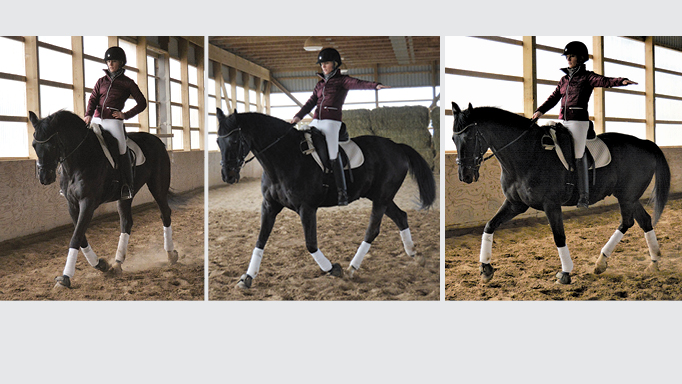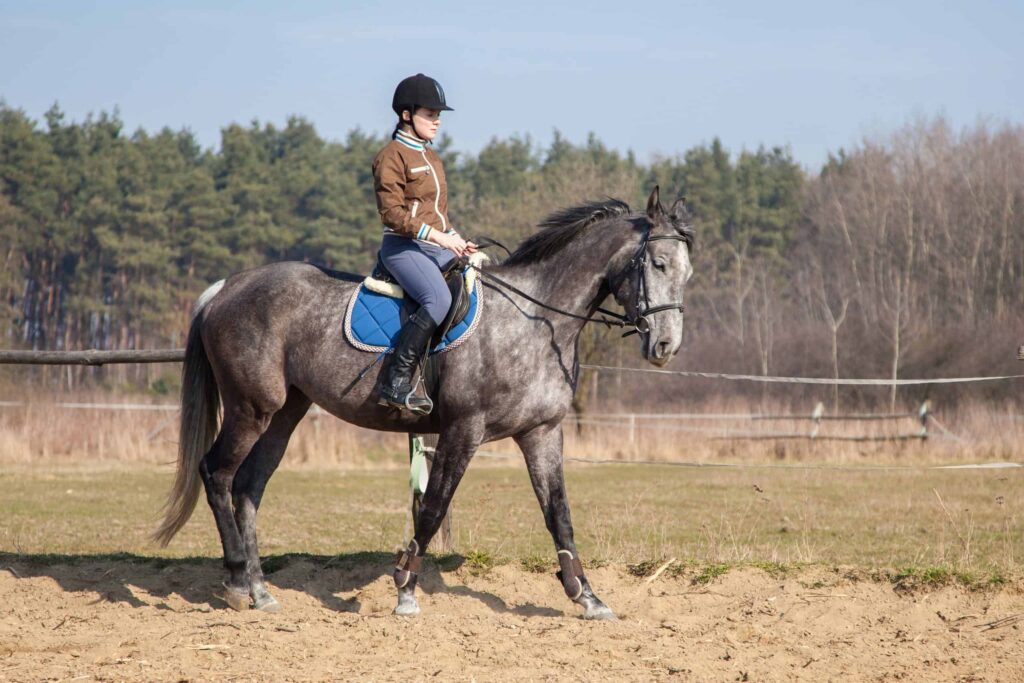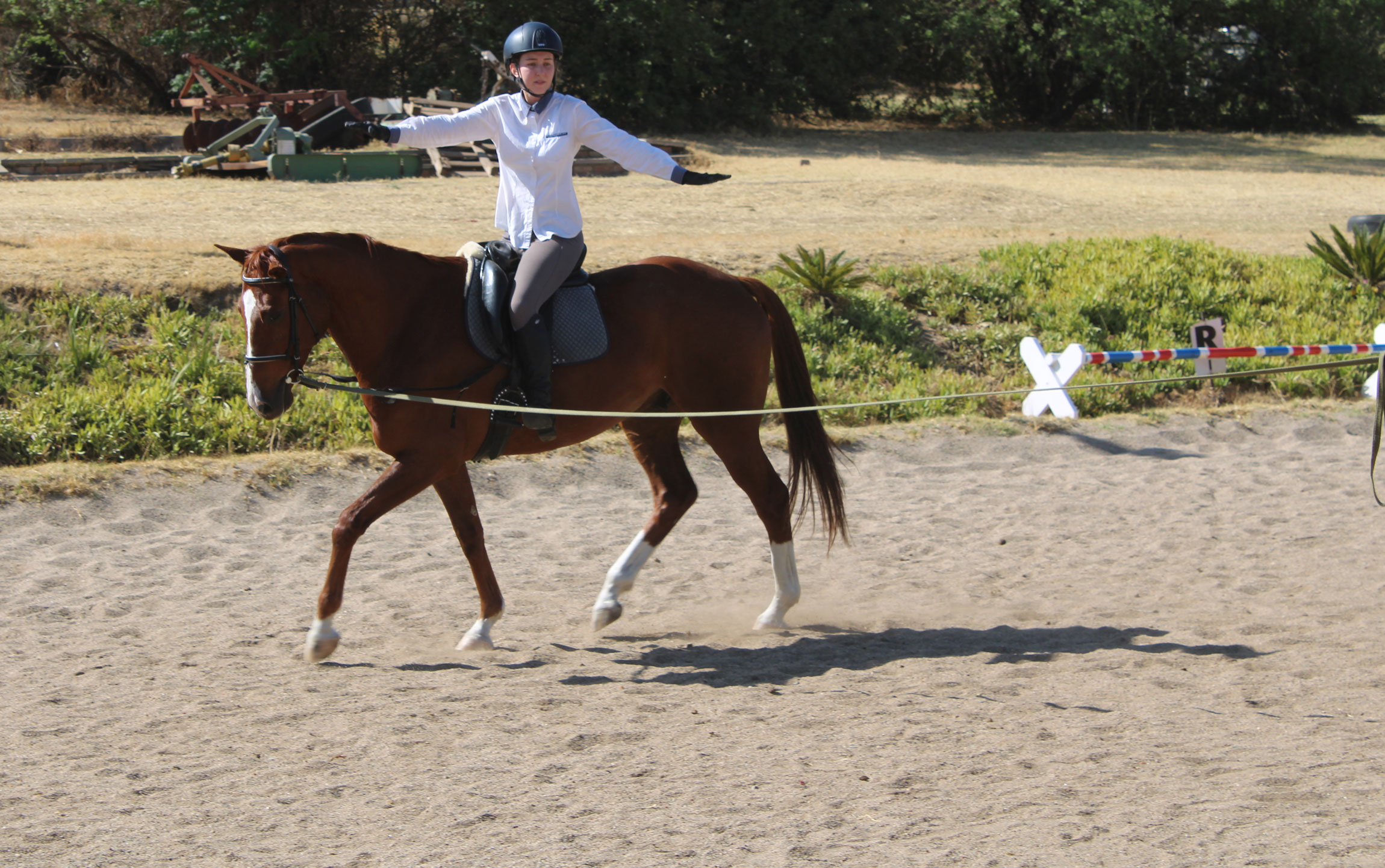is a popular recreational activity enjoyed by people of all ages. In this article, you will learn some valuable tips to help you stay in balance and have a smooth horseback riding experience. We will discuss important aspects such as proper posture, maintaining a secure seat, and effective communication with your horse. By following these tips, you will feel more confident and comfortable in the saddle, allowing you to fully enjoy the beauty and thrill of horseback riding. So let’s get started and improve our riding skills together!
Staying in Balance: Tips for a Smooth Horseback Riding Experience
Horseback riding is a thrilling and rewarding activity that allows you to connect with these majestic animals and explore the great outdoors. Whether you are a beginner or an experienced rider, it is essential to understand the fundamentals of horseback riding and how to stay in balance to ensure a safe and enjoyable experience for both you and your equine partner. In this article, we will explore various tips and techniques that will help you maintain balance while horseback riding.
History of Horseback Riding
Horseback riding has a rich and storied history that dates back thousands of years. From ancient civilizations to modern times, horses have played a crucial role in transportation, warfare, agriculture, and even sport. The domestication of horses revolutionized human society, allowing for increased mobility and cultural exchange. Today, horseback riding is primarily enjoyed as a recreational activity, but the bond between horse and rider remains just as strong.
Benefits of Horseback Riding
Aside from the sheer enjoyment of being in the saddle, horseback riding offers numerous physical, mental, and emotional benefits. It is a great form of exercise that improves balance, coordination, and core strength. Riding also enhances mental focus, reduces stress levels, and increases self-confidence. Additionally, spending time with horses can provide a sense of peace and tranquility, helping to improve overall well-being.

Different Styles of Horseback Riding
There are several different styles or disciplines of horseback riding, each with its own unique set of rules and techniques. Some popular disciplines include dressage, show jumping, eventing, and trail riding. Dressage focuses on precision and harmony between horse and rider, while show jumping tests speed and accuracy over a course of jumps. Eventing combines dressage, cross-country, and show jumping into a comprehensive test of horse and rider ability. Trail riding allows riders to explore natural landscapes at a more leisurely pace.
Choosing the Right Horse
Selecting the right horse is essential for a successful riding experience. Consider the horse’s breed, temperament, and size when making your choice.
Breeds Suitable for Riding
Numerous horse breeds are suitable for riding, with different strengths and temperaments. Some popular riding breeds include Thoroughbreds, Quarter Horses, Arabians, and Warmbloods. It is important to research each breed’s characteristics and ensure that they align with your riding goals and abilities.
Determining the Appropriate Size
The size of the horse is another important factor to consider. A horse that is too small or too large for you can affect your ability to maintain balance and control. Your feet should comfortably reach the stirrups, and you should be able to easily grip the reins while maintaining a relaxed posture.
Evaluating Horse Temperament
A horse’s temperament plays a significant role in your riding experience. Assessing a horse’s temperament can be done through observation and interaction. Look for a horse that is calm, cooperative, and responsive to cues. Avoid horses that exhibit nervousness, aggression, or resistance, as they can make it challenging to maintain balance and control.

Essential Riding Gear
Proper riding gear is crucial for both safety and comfort. Here are three essential items that every rider should have:
Helmet Selection and Safety
A well-fitting helmet is essential for protecting your head in the event of a fall or accident. Make sure the helmet meets safety standards and sits securely on your head, without excessive movement. Always fasten the chin strap securely before mounting your horse.
Proper Riding Boots
Investing in a pair of sturdy, closed-toe riding boots is essential for safe and comfortable riding. Riding boots should have a heel of at least one inch to prevent the foot from slipping through the stirrup. Their sole should provide adequate grip and support, ensuring stability in the saddle.
Comfortable Riding Attire
Wearing comfortable and appropriate clothing is crucial for an enjoyable riding experience. Opt for fitted pants or breeches that allow freedom of movement and prevent chafing. Choose a lightweight, breathable top, and consider layering for varying weather conditions. Avoid wearing loose clothing or items that may get caught on equipment.
Understanding Horse Behavior
Developing an understanding of horse behavior is essential for effective communication and maintaining balance while riding. Horses are highly social creatures with their own unique language and body cues.
Horse Communication and Body Language
Horses use a combination of body language, vocalizations, and facial expressions to communicate. Understanding these cues will help you interpret your horse’s intentions and emotions. Pay attention to ear position, tail movement, and body posture to gain insight into your horse’s state of mind.
Establishing Trust and Respect
Building trust and respect is key to a successful partnership with your horse. Spend time developing a bond through ground exercises, grooming, and handling. Consistent and fair training methods will help establish boundaries and reinforce positive behaviors.
Handling Common Behavioral Issues
It is not uncommon for horses to exhibit behavioral issues such as spooking, bucking, or bolting. Understanding the root cause of these behaviors and implementing appropriate training techniques can help address and resolve them. Seek guidance from a professional trainer if you encounter persistent behavioral challenges.

Mounting and Dismounting Techniques
Proper mounting and dismounting techniques are essential for your safety and the comfort of your horse. Here are some recommended methods:
Proper Mounting from the Ground
To mount from the ground, start by holding the reins in your left hand and gathering the stirrup with your right hand. Place your left foot in the stirrup, grab the front of the saddle, and push yourself up while swinging your right leg over the horse’s back. Sit down gently in the saddle, adjust your stirrups, and ensure your reins are properly held.
Using a Mounting Block
Using a mounting block is especially useful for riders with limited mobility or for mounting taller horses. Position the block next to your horse’s side, facing the saddle. Step on the block with your left foot, hold the reins and stirrup, and push yourself upward while lifting your right leg over the horse’s back. Sit down gently in the saddle and adjust your stirrups before proceeding.
Safely Dismounting
To dismount safely, gather the reins in your left hand, lean forward slightly, and swing your right leg over the horse’s back. Land softly on the ground, ensuring your feet are clear of the stirrups. Maintain a firm hold on the reins and lead your horse away from the mounting area.
Mastering Basic Riding Skills
Mastering basic riding skills is crucial for staying in balance while on horseback. Here are some fundamental skills to focus on:
Correcting and Maintaining Balance
Maintaining a centered and balanced position in the saddle is essential for stability. Focus on aligning your ear, shoulder, hip, and heel in a straight line. Engage your core muscles to maintain balance and stability, adjusting your position as needed.
Developing Proper Posture
A correct riding posture is crucial for effective communication with your horse. Sit tall with your shoulders back, chest open, and gaze forward. Relax your arms and maintain a soft, following contact with the horse’s mouth.
Understanding Basic Riding Aids
Understanding and correctly applying basic riding aids is essential for communicating with your horse. Utilize the natural aids of your seat, legs, hands, and voice to communicate your intentions. Each aid has a specific purpose and effect, which should be applied with clarity and consistency.

Building a Strong Connection with the Horse
Establishing a strong bond and connection with your horse will enhance your riding experience. Here are some ways to strengthen your relationship:
Establishing a Bond through Groundwork
Groundwork exercises, such as grooming, lunging, and leading, can help establish trust and respect. Spend time with your horse outside of riding sessions to develop a deeper connection and understanding.
Improving Communication through Trust Exercises
Trust exercises, such as desensitization and obstacle courses, can help improve communication and build confidence. Gradually expose your horse to various stimuli, rewarding calm and positive behaviors.
Developing a Mutual Understanding
Consistent and clear communication is key to developing a mutual understanding with your horse. Practice patience, empathy, and active listening to establish a harmonious partnership based on trust and respect.
Trail Riding Tips and Safety
Trail riding offers a unique and adventurous riding experience. Here are some tips to ensure a safe and enjoyable trail ride:
Choosing Suitable Trails
Before embarking on a trail ride, research and choose trails suitable for your skill level and the temperament of your horse. Consider factors such as terrain, distance, and any potential hazards or restrictions.
Dealing with Challenging Terrain
Challenging terrain, such as steep inclines or uneven surfaces, requires extra caution and balance. Maintain a secure and centered position in the saddle, adjust your weight as needed, and trust your horse to navigate safely.
Emergency Preparedness
Always be prepared for potential emergencies during trail rides. Carry a cell phone, a first aid kit, and water for both you and your horse. Let someone know your intended route and estimated return time.

Jumping and Cross-Country Riding
Jumping and cross-country riding require additional skills and techniques. Here are some key aspects to consider:
Introduction to Jumping Techniques
Jumping requires coordination, balance, and precision. Begin with small, straightforward jumps and gradually increase the difficulty. Focus on maintaining a steady rhythm, a secure position, and an effective release over the jump.
Training for Cross-Country Riding
Cross-country riding combines jumping with challenging terrain and natural obstacles. Proper preparation and training are essential. Practice riding over varied terrain, gradually increasing the complexity of the obstacles.
Jumping Safety Measures
Safety should always be a priority when jumping. Ensure that your horse is physically fit and properly trained for jumping exercises. Use appropriate protective equipment such as boots and a fitted jumping saddle. Gradually increase the height and complexity of jumps as your skills progress.
Competitive Riding Disciplines
For riders looking to take their skills to a competitive level, various disciplines offer a chance to showcase their abilities. Here are three popular disciplines:
Dressage: The Art of Precision
Dressage focuses on the precise execution of a series of predetermined movements. It emphasizes harmony, balance, and suppleness between horse and rider. Accuracy, rhythm, and correct body position are essential for success.
Show Jumping: Speed and Accuracy
Show jumping tests the horse and rider’s ability to navigate a course of jumps within a designated time limit. The objective is to clear the jumps without knocking down any rails. Speed, accuracy, and effective communication are crucial.
Eventing: The Ultimate Test
Eventing combines the disciplines of dressage, cross-country, and show jumping into a comprehensive test of horse and rider ability. It requires versatility, stamina, and adaptability. Riders compete in all three phases, showcasing their skills across different disciplines.
Caring for Your Riding Horse
Proper care and maintenance of your riding horse are crucial for its overall health and well-being. Here are three essential aspects to consider:
Feeding and Nutrition
A balanced diet is essential for your horse’s overall health and performance. Consult with a veterinarian or equine nutritionist to determine the appropriate feed, supplements, and feeding schedule for your horse based on its age, activity level, and specific requirements.
Stable Management
Maintaining a clean and organized stable environment is essential to your horse’s comfort and health. Regularly muck out stalls, provide fresh bedding, and ensure proper ventilation. Regular farrier visits and dental check-ups are also necessary to maintain hoof and dental health.
Grooming and Maintenance
Regular grooming sessions help maintain your horse’s health, hygiene, and overall well-being. Daily grooming promotes healthy skin and coat, allows you to detect any injuries or abnormalities, and strengthens the bond between horse and rider.
Understanding Horse Health
Being able to recognize common horse ailments, signs of illness or injury, and implementing preventive measures are essential for your horse’s well-being.
Common Horse Ailments
Horses are susceptible to various ailments and diseases. Common ailments include colic, lameness, respiratory infections, skin conditions, and digestive issues. Familiarize yourself with the symptoms, causes, and preventive measures for these ailments to ensure timely and appropriate care.
Signs of Illness or Injury
Understanding the signs of illness or injury is crucial for prompt intervention. Look out for changes in appetite, behavior, coat quality, weight loss, lameness, or swelling. Contact your veterinarian if you notice any abnormal signs or if your horse’s condition worsens.
Vaccination and Deworming
Follow a regular vaccination and deworming schedule recommended by your veterinarian. Vaccinations help protect against common equine diseases, while deworming helps prevent internal parasites. Maintain accurate records of vaccinations and deworming treatments.
Safety Guidelines for Riders
Your safety should always be a top priority while horseback riding. Here are some safety guidelines to follow:
Riding in Groups
When riding in groups, maintain a safe distance between horses to avoid collisions or other accidents. Communicate with other riders to ensure mutual awareness and understanding. Follow established trail etiquette and rules, and always be respectful of other riders.
Riding Alone
If riding alone, inform someone of your intended route and estimated time of return. Carry a cell phone and other emergency provisions. Choose well-known and well-traveled trails, and always prioritize your safety.
Dealing with Unpredictable Situations
Horseback riding involves inherent risks, including unpredictable situations. Stay calm and focused, maintain a balanced and secure position in the saddle, and trust your horse’s instincts. Always prioritize your safety and the well-being of your horse.
Conclusion
Horseback riding is a rewarding and immersive activity that allows you to experience a unique bond with these magnificent animals. By following the tips and techniques outlined in this article, you can enhance your riding experience and stay in balance. Whether you are a beginner or an experienced rider, maintaining balance is essential for safety, effective communication, and overall enjoyment. So saddle up, stay in balance, and enjoy the incredible journey that horseback riding offers!
Frequently Asked Questions
-
Q: How do I choose the right horse for horseback riding? A: When choosing a horse for riding, consider their breed, temperament, and size. Research various breeds and their characteristics to find a suitable match for your riding goals and abilities. Evaluate the horse’s temperament for calmness and responsiveness. Size is also important, ensuring that you can maintain balance and control comfortably.
-
Q: What kind of gear do I need for horseback riding? A: Essential riding gear includes a properly fitted helmet for safety, sturdy riding boots with a heel of at least one inch to prevent slippage, and comfortable riding attire such as fitted pants and a lightweight, breathable top.
-
Q: How do I establish a bond with my horse? A: Establishing a bond with your horse takes time and patience. Groundwork exercises, grooming, and handling can help build trust and respect. Spend quality time with your horse outside of riding sessions to develop a deeper connection.
-
Q: What should I do if my horse exhibits behavioral issues? A: If your horse exhibits behavioral issues, it is best to seek guidance from a professional trainer. They can help assess the root cause of the behavior and provide appropriate training techniques to address and resolve it.
-
Q: How do I maintain balance while riding? A: Maintaining balance involves correct posture, engaging core muscles, and aligning your ear, shoulder, hip, and heel in a straight line. By consistently practicing correct riding position and staying aware of your body, you can improve and maintain balance in the saddle.
-
Q: What should I do in case of an emergency during a trail ride? A: Be prepared for emergencies by carrying a cell phone, a first aid kit, and water for both you and your horse. Let someone know your intended route and estimated return time. Stay calm, assess the situation, and prioritize your safety and the well-being of your horse.
-
Q: What are some popular competitive riding disciplines? A: Some popular competitive riding disciplines include dressage, show jumping, and eventing. Dressage focuses on precision and harmony, show jumping tests speed and accuracy over jumps, and eventing combines dressage, cross-country, and show jumping into a comprehensive test of horse and rider ability.
-
Q: How can I ensure the health and well-being of my riding horse? A: Provide a balanced diet, appropriate shelter, regular veterinary care, and exercise for your riding horse. Maintain a clean and organized stable environment, practice good grooming habits, and monitor your horse for any signs of illness or injury. Follow a regular vaccination and deworming schedule recommended by your veterinarian.
-
Q: Is it safe to ride alone? A: Riding alone presents inherent risks, but with proper precautions, it can be done safely. Inform someone of your intended route and estimated time of return. Carry a cell phone and other emergency provisions. Choose well-known and well-traveled trails, and always prioritize your safety.
-
Q: How can I deal with unpredictable situations while riding? A: Unpredictable situations can occur while horseback riding. Stay calm and focused, maintain a balanced and secure position in the saddle, and trust your horse’s instincts. Always prioritize your safety and the well-being of your horse during such situations.
